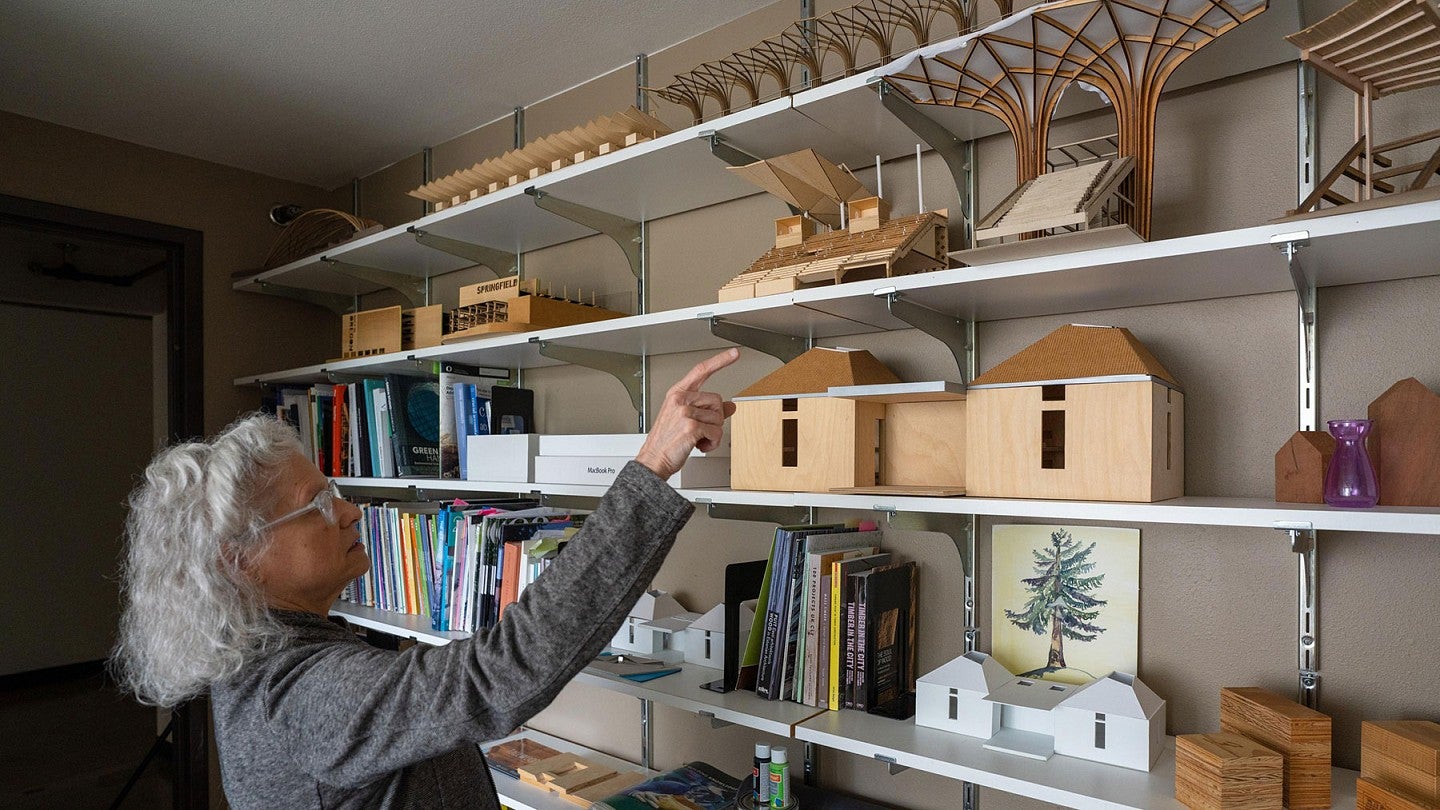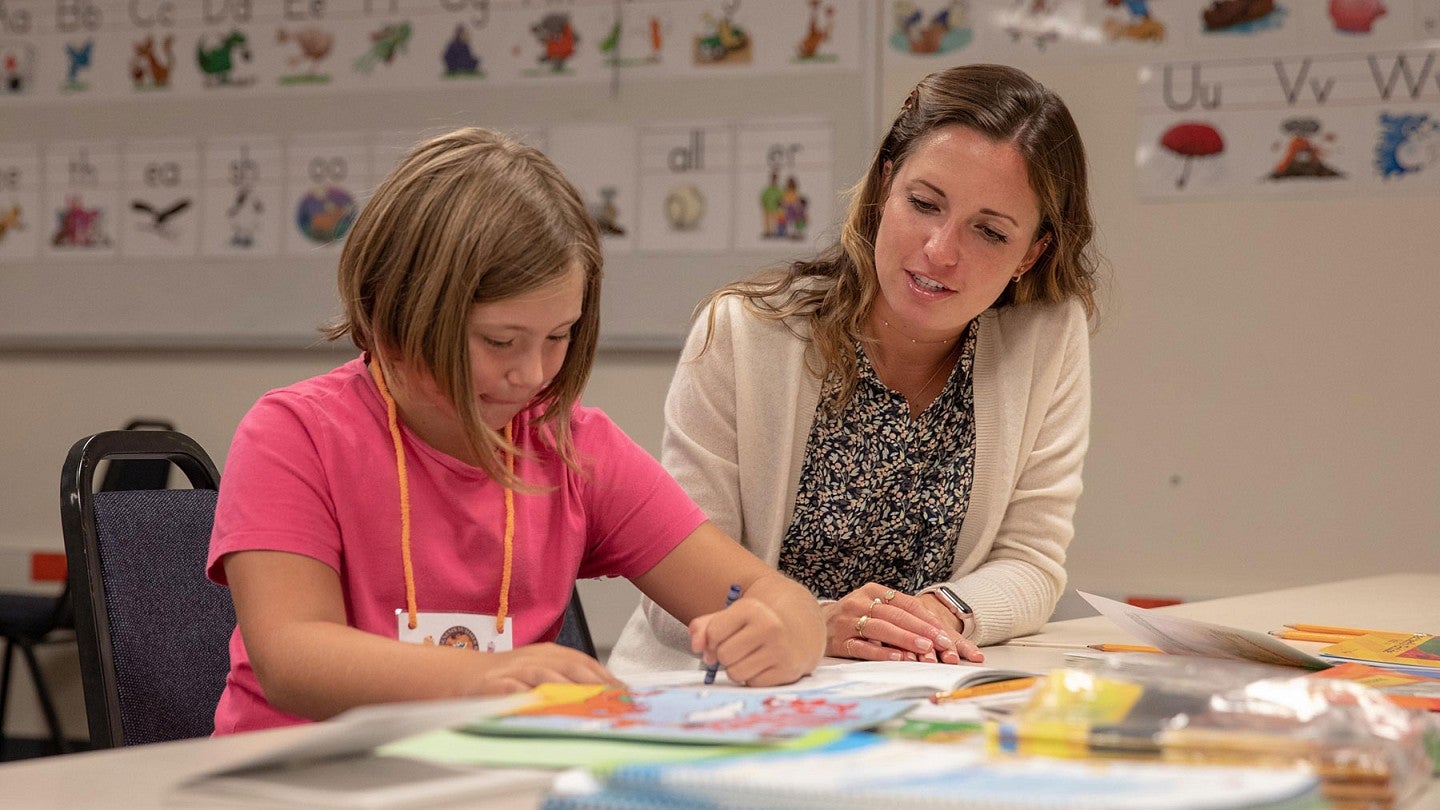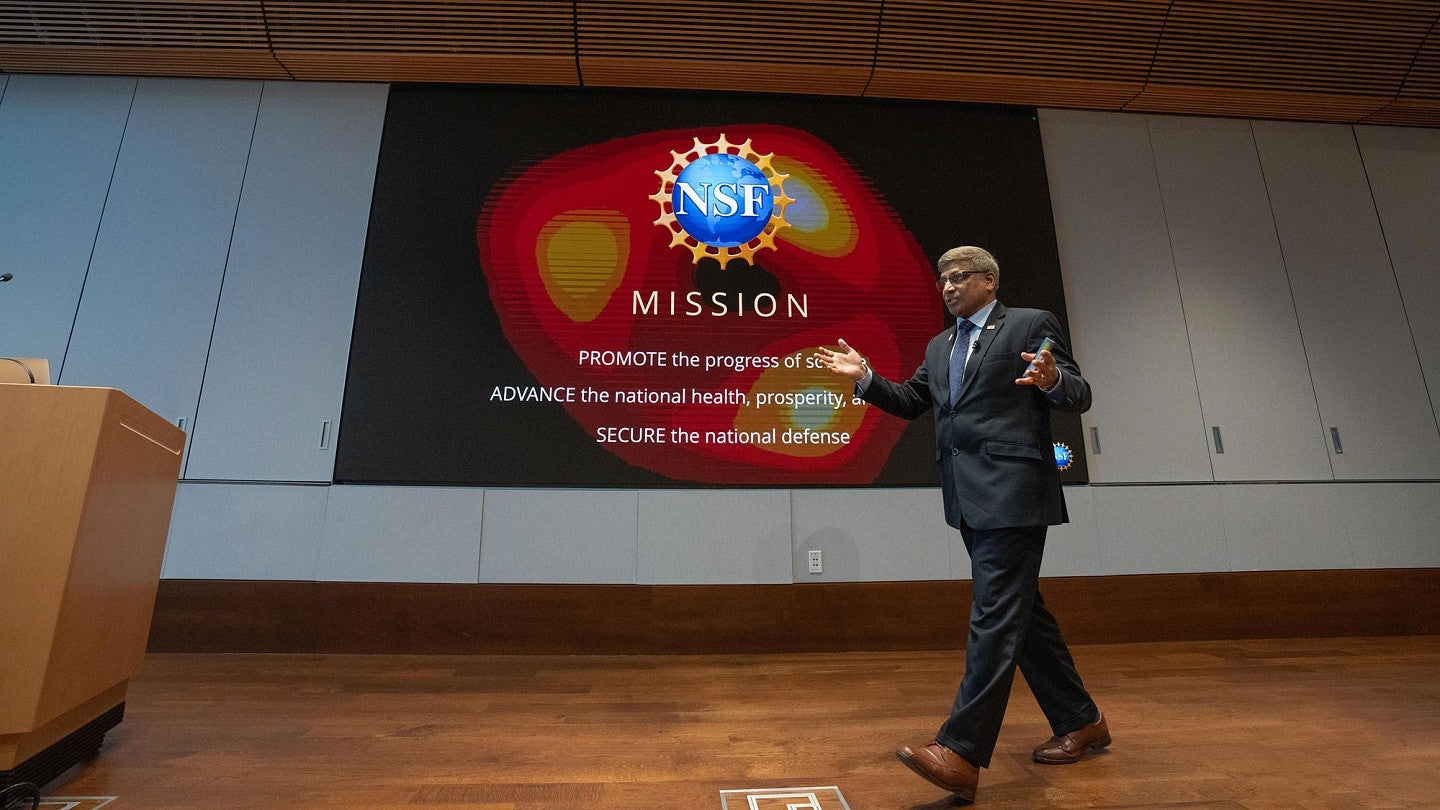
UO hosts U.S. National Science Foundation director for the first time
‘This is the time when domestic talent shall not,
must not, be left behind,’
Sethuraman Panchanathan said
The University of Oregon recently achieved a new milestone with its first-ever visit from the director of the U.S. National Science Foundation, one of the leading sources of scientific research funding in the world. Sethuraman Panchanathan was on campus Aug. 26, the first such visit in the organization’s 75-year history. But his message was more about what was to come, rather than what has been.
“You are the future,” Panchanathan said to a group of UO early-career researchers. “And the National Science Foundation cares deeply about the people who make the future happen.”
Panchanathan is the 15th director of the National Science Foundation, the only U.S. government agency charged with advancing all fields of scientific discovery, technological innovation and STEM education. The NSF currently has 255 active grants with more than $35 million invested in UO researchers in core areas including earthquake resilience, engineered wood technologies, STEM education and more.
Panchanathan delivered a presentation open to the university community and met with industry representatives, government officials and community leaders. But he had one special request for his visit: He wanted to meet early-career faculty members and graduate students who are benefiting from NSF funding.
“Our higher education institutions are the pride of our nation,” Panchanathan said. “Go anywhere in the world and they want to see how they can build the kind of institutions we have here. How do we ensure these institutions become engines of prosperity? Not just educating, as important as it is, but engines of prosperity.”
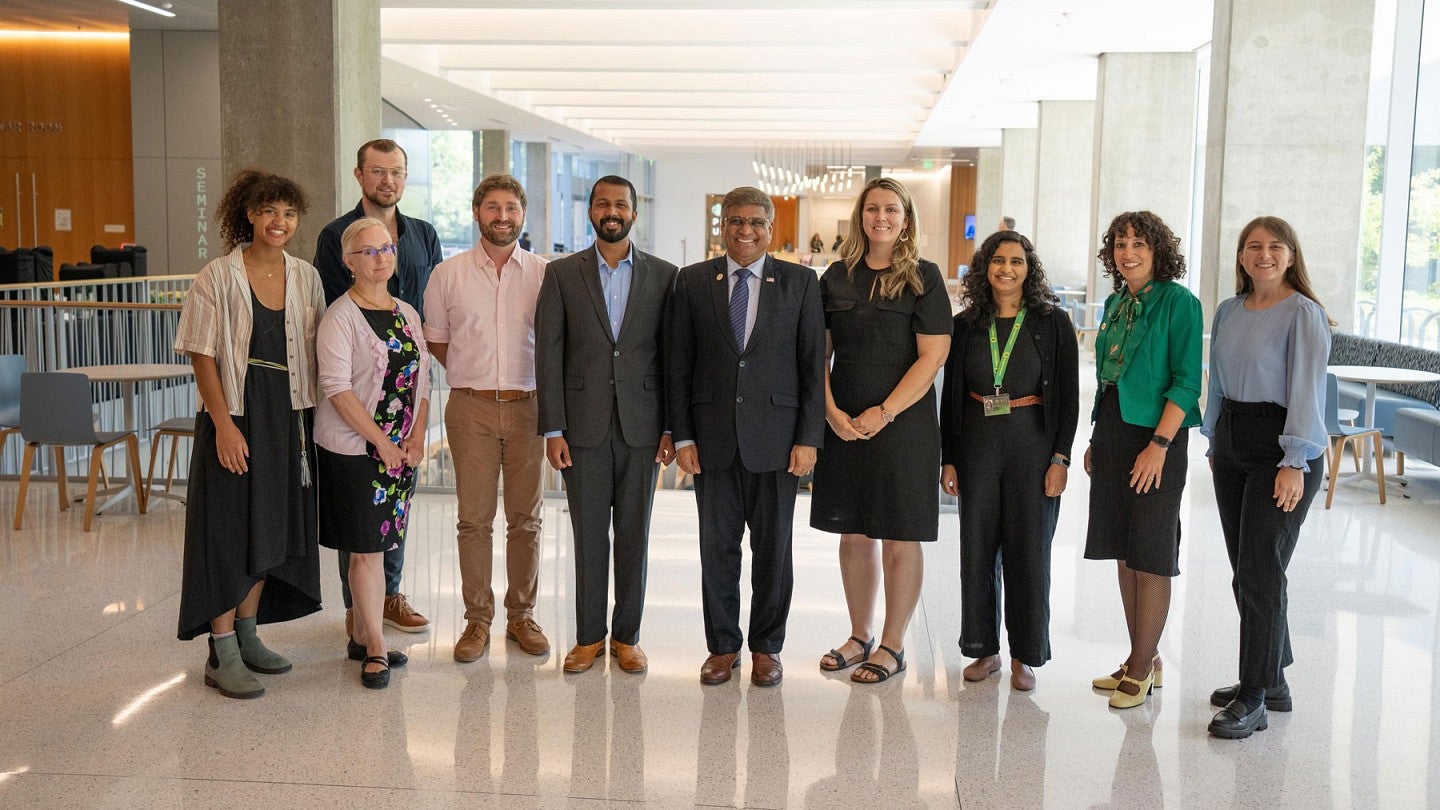
On his arrival, Panchanathan shared a meal with UO recipients of the NSF Faculty Early Career Development Program and NSF Graduate Research Fellowship Program. Those programs are designed to support the work of exceptional early career and trainee scientists in pursuit of solving timely and socially relevant problems. Awardees in attendance represented the breadth of research fields across campus, including volcanology, math education and neuroscience.
The NSF typically receives up to 14,000 applicants for the graduate fellowships yearly, Panchanathan said, but only about 2,000 students nationwide are selected for the honor. “That’s a testament to the amazing ideas you have to offer to the NSF,” he said. “Kudos to all of you.”
Many recipients said the awards have allowed them to devote more time to their research and expand their work into public outreach and multidisciplinary areas.
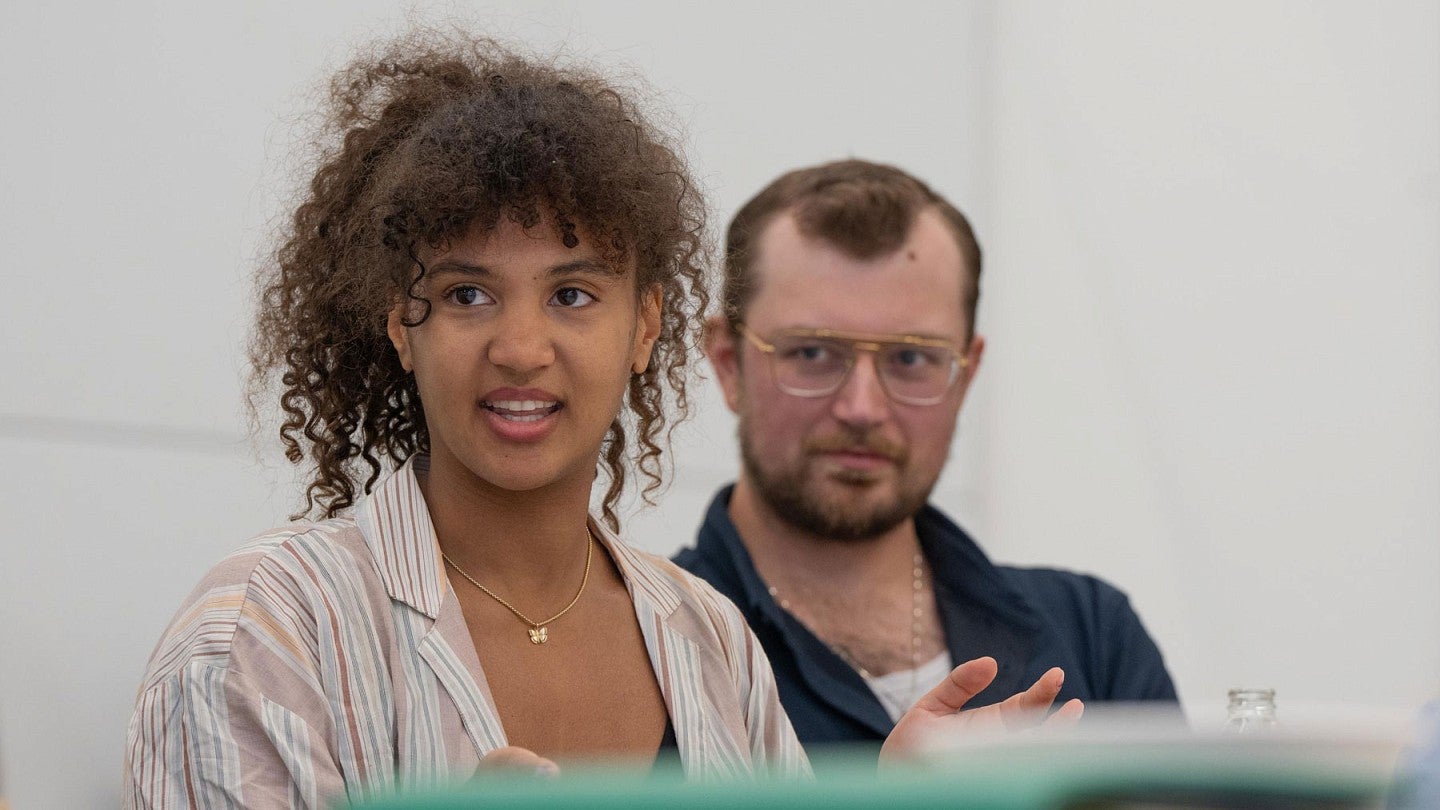
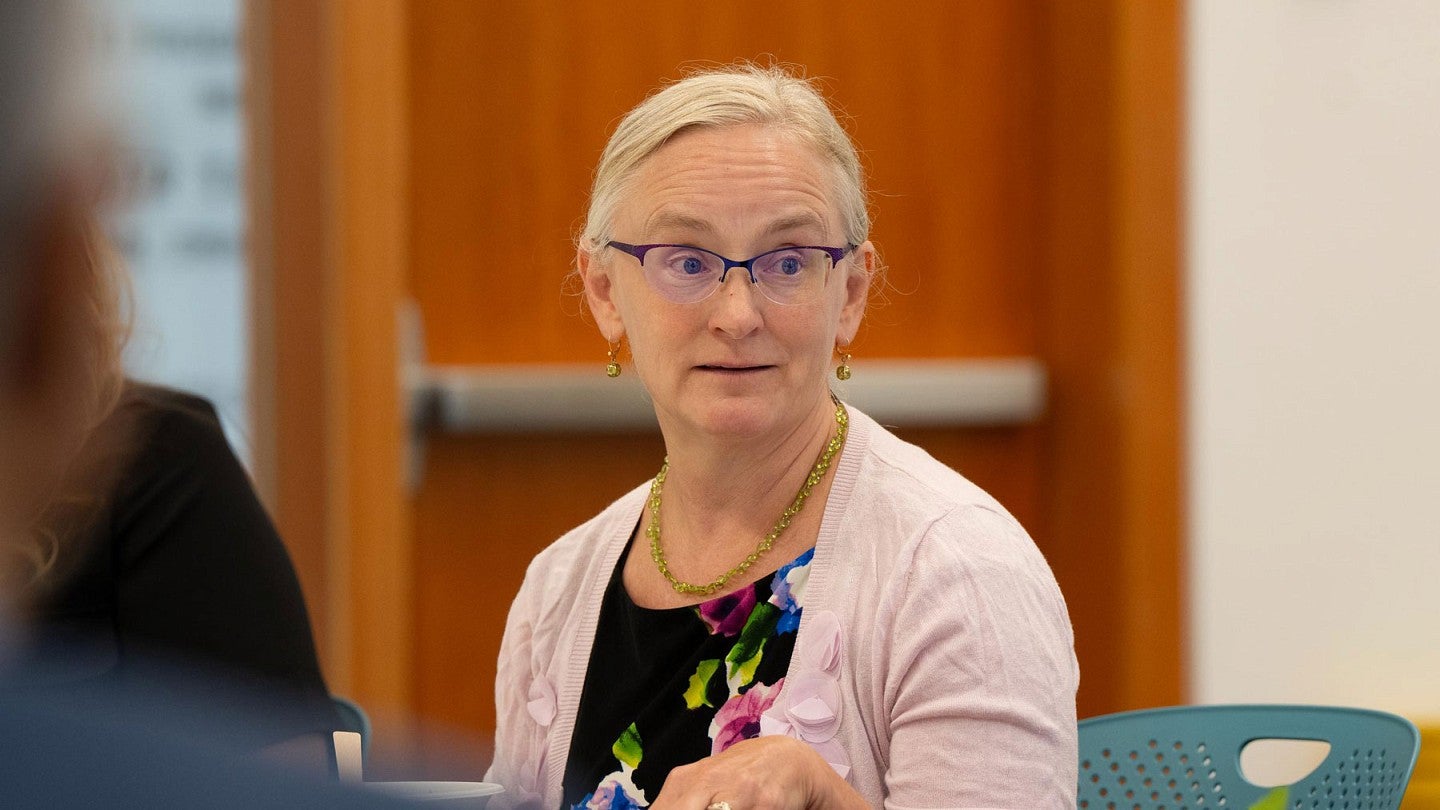
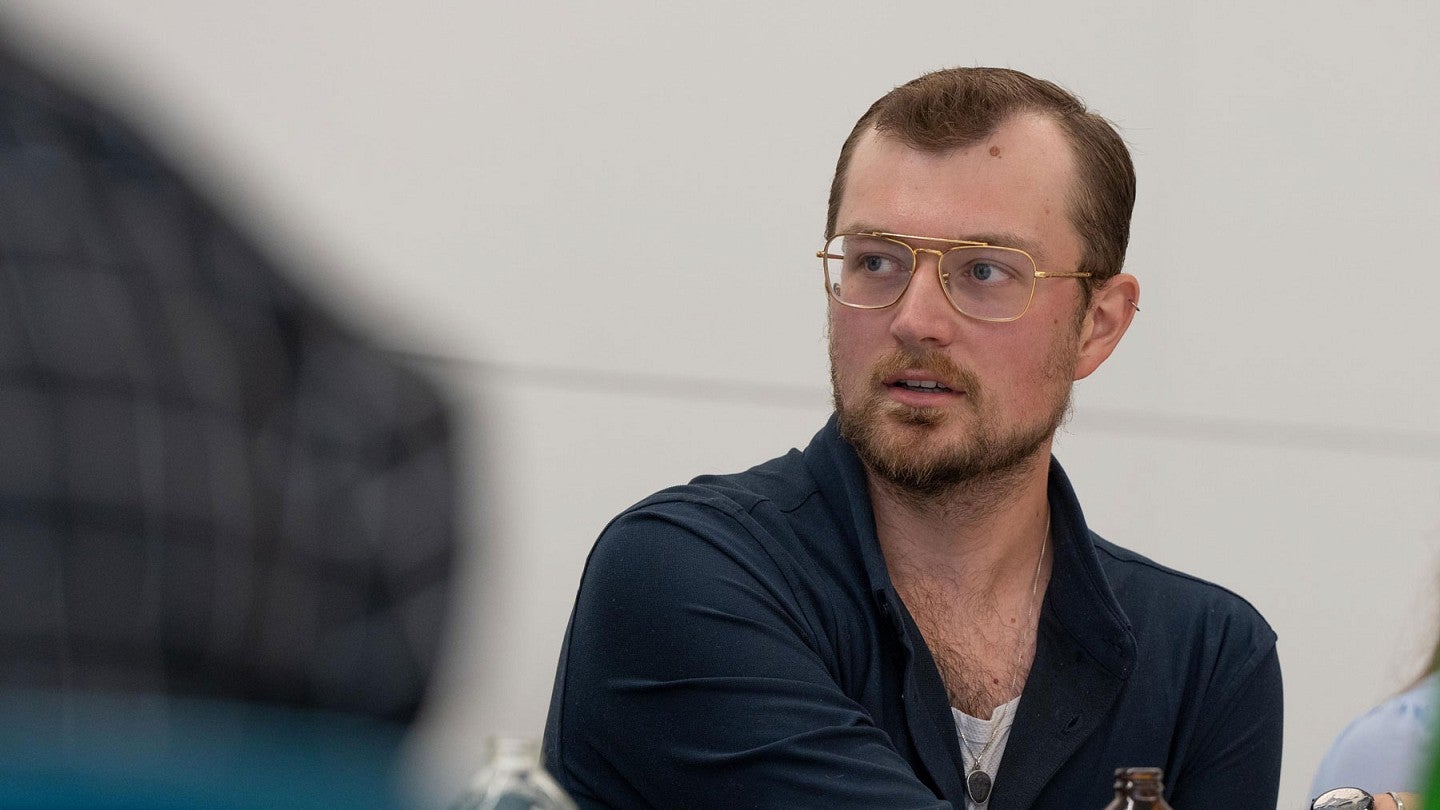
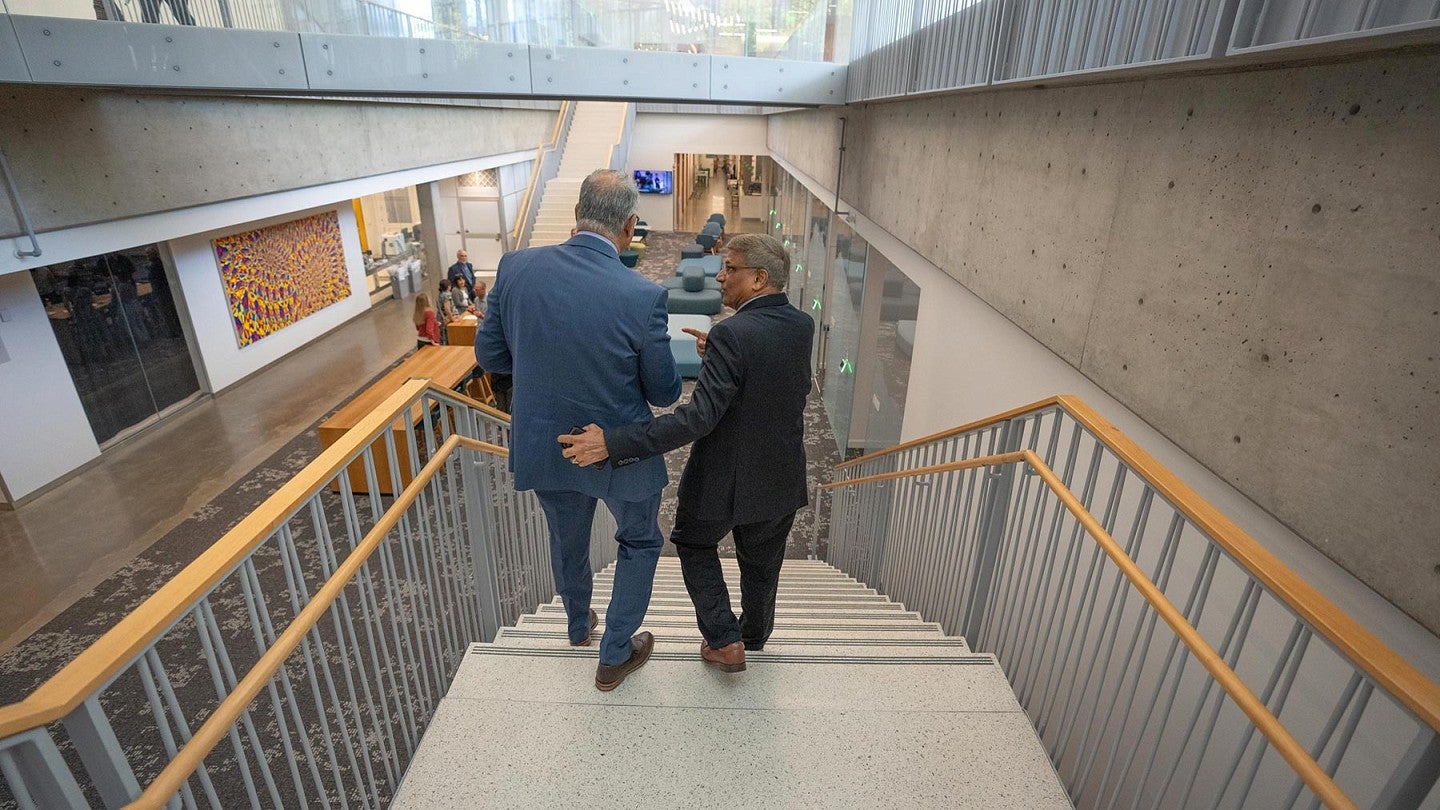
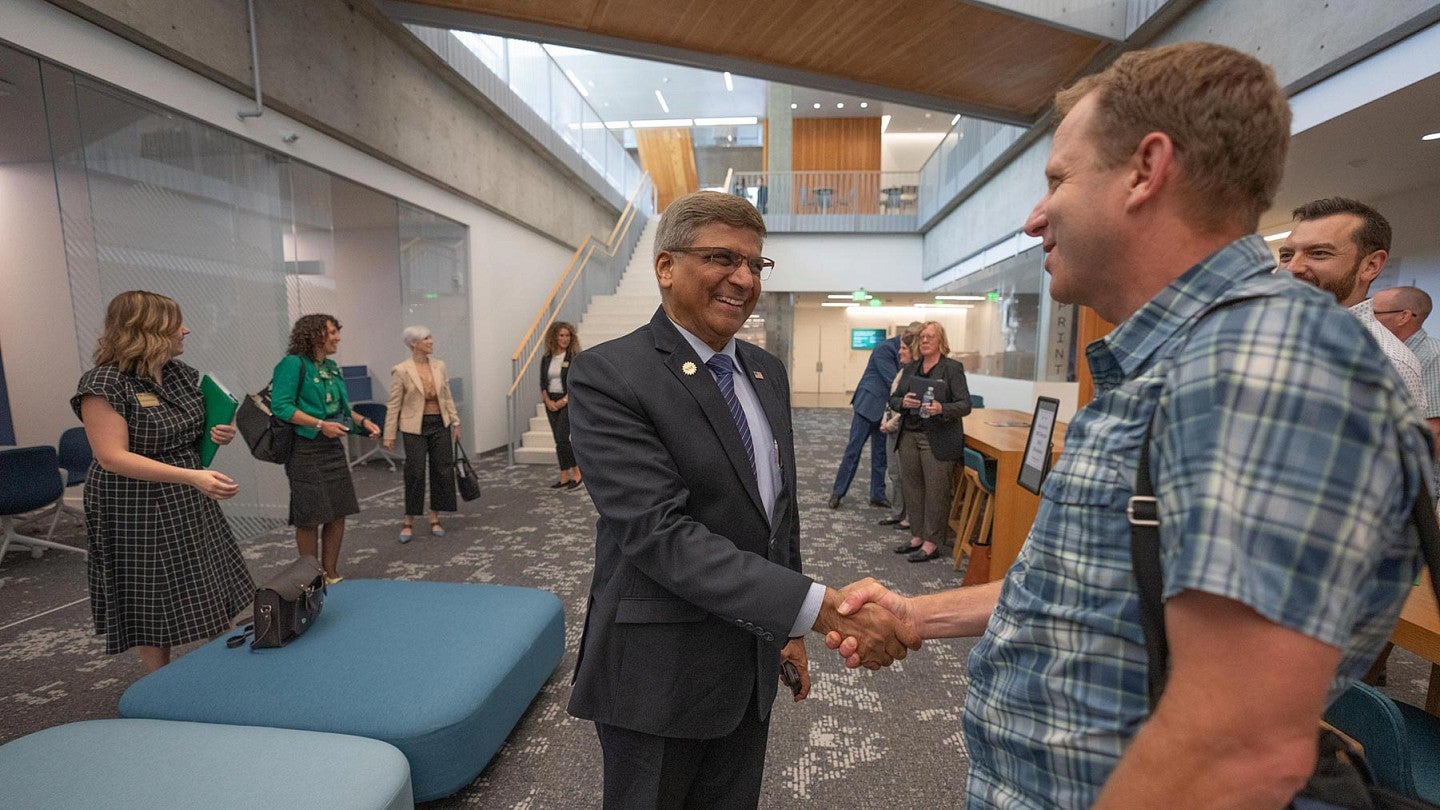
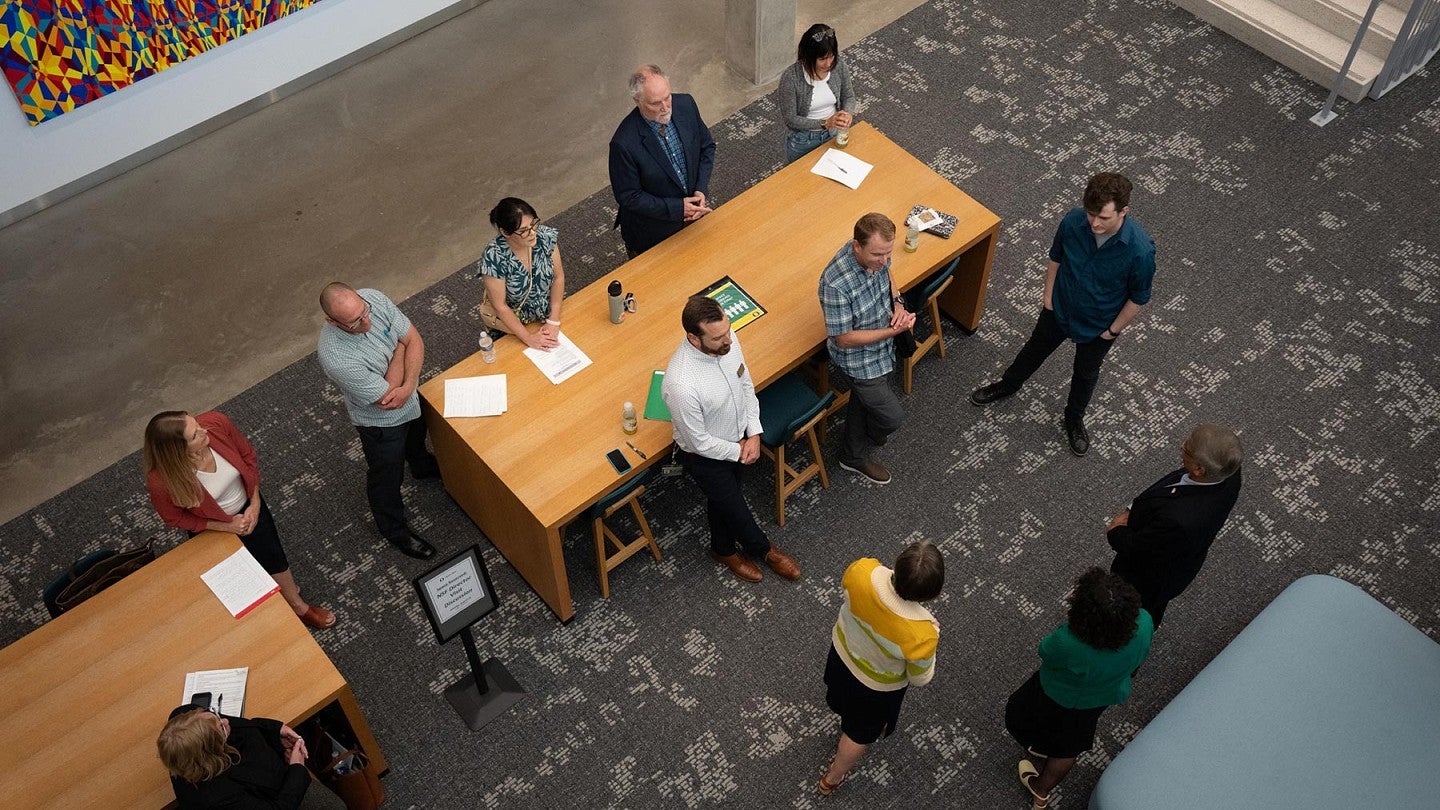
Panchanathan also met with the directors, professors, trainees and students of the NSF Oregon Pathways to Industry Research Careers and the Knight Campus Graduate Internship Program.
The Knight Campus Graduate Internship Program is an accelerated master’s program that prepares students for careers in scientific industry, including semiconductors, bioinformatics and optics, through hands-on training and intensive internship placements.
“It’s a powerful way to train,” said Stacey York, senior director of professional development and workforce readiness at the UO’s Phil and Penny Knight Campus for Accelerating Scientific Impact.
The Oregon Pathways to Industry Research Careers program provides community college students a way to transfer to the UO to finish their bachelor’s degrees and then transition to industry while earning a master's degree through the Knight Campus Graduate Internship Program.
This partnership "reenergized our faculty and students and what’s possible at the community college level,” said Rachel Pokrandt, president of Umpqua Community College. "It is the model that works.”
Nathan Jacobs, senior director of academic and impact programming at the Knight Campus, also highlighted the bioengineering program, the first engineering doctoral program at the UO. “We had the opportunity to start a graduate engineering program at a university without an engineering school,” he said. “Starting from scratch, what would that program look like?”
The bioengineering program, now going into its fifth year, had five doctoral students awarded NSF graduate fellowships in 2024. Jacobs said the school is expecting its first bioengineering graduates in the coming year.
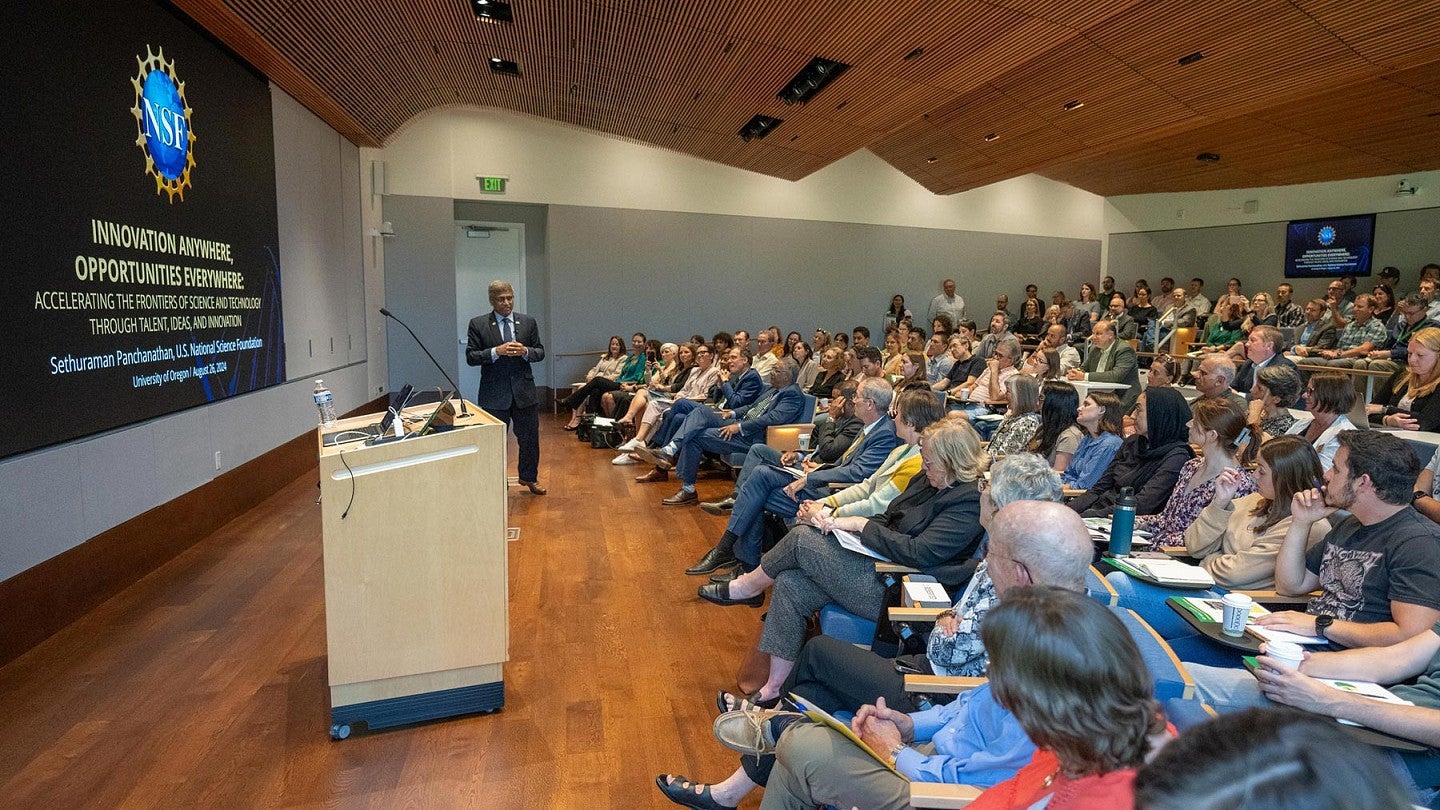
Panchanathan delivered a public presentation to a lecture hall at full capacity. He was welcomed by UO President Karl Scholz and invited on stage by Anshuman “AR” Razdan, the UO’s vice president for research and innovation and a former junior researcher mentored by Panchanathan.
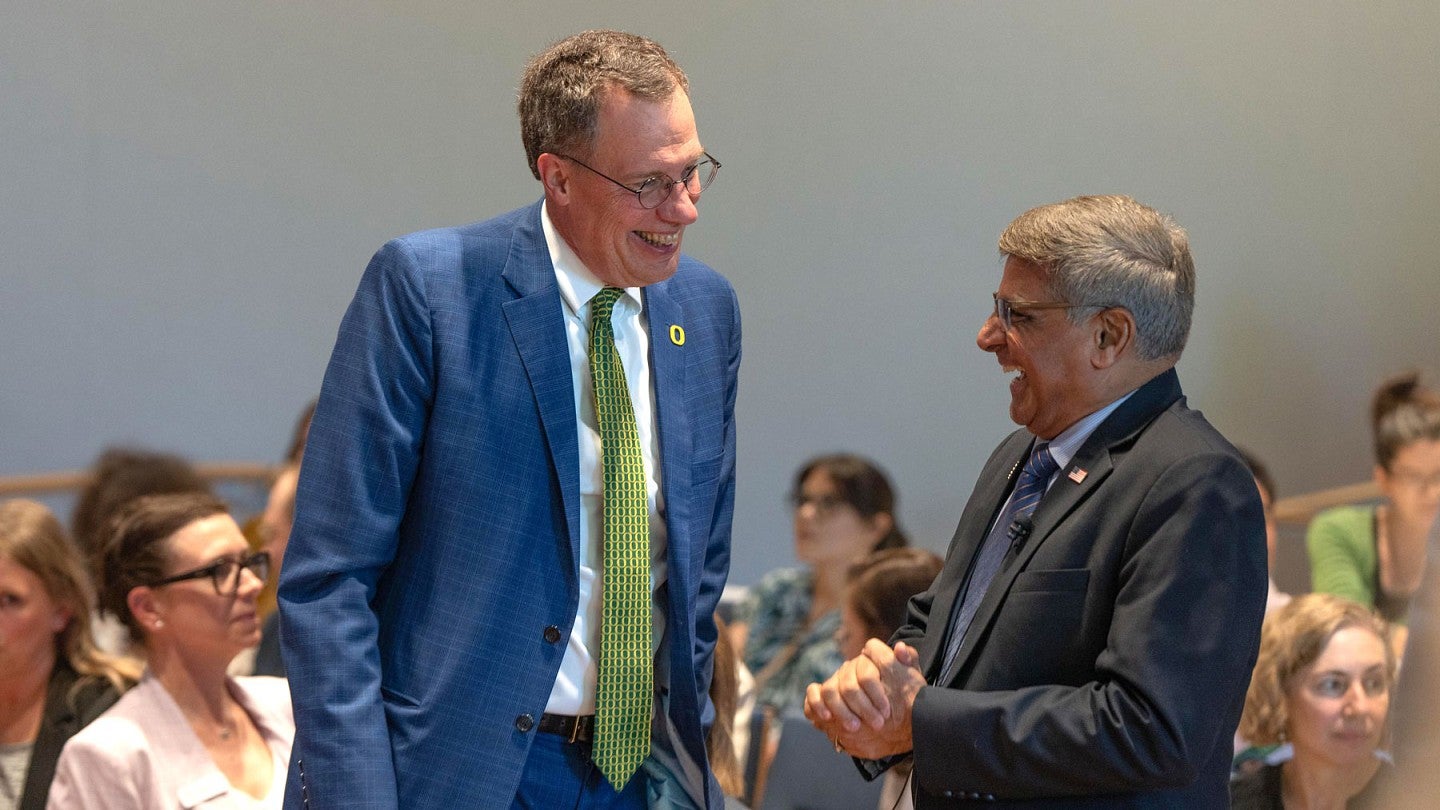
“The NSF is the best-kept secret,” Panchanathan said. In his talk, he discussed the agency’s history and mission as well as its influence on the UO’s research. He said it illustrated “the DNA of NSF”: innovation anywhere and opportunity everywhere. But what intertwines the two strands, he said, are ideas, programs and the workforce.
“If I had to describe the NSF by one word, I would say it’s people,” Panchanathan said. “The NSF is about people, people who are the discoverers, people who are the inventors, people who are the entrepreneurs. People who do public service.”
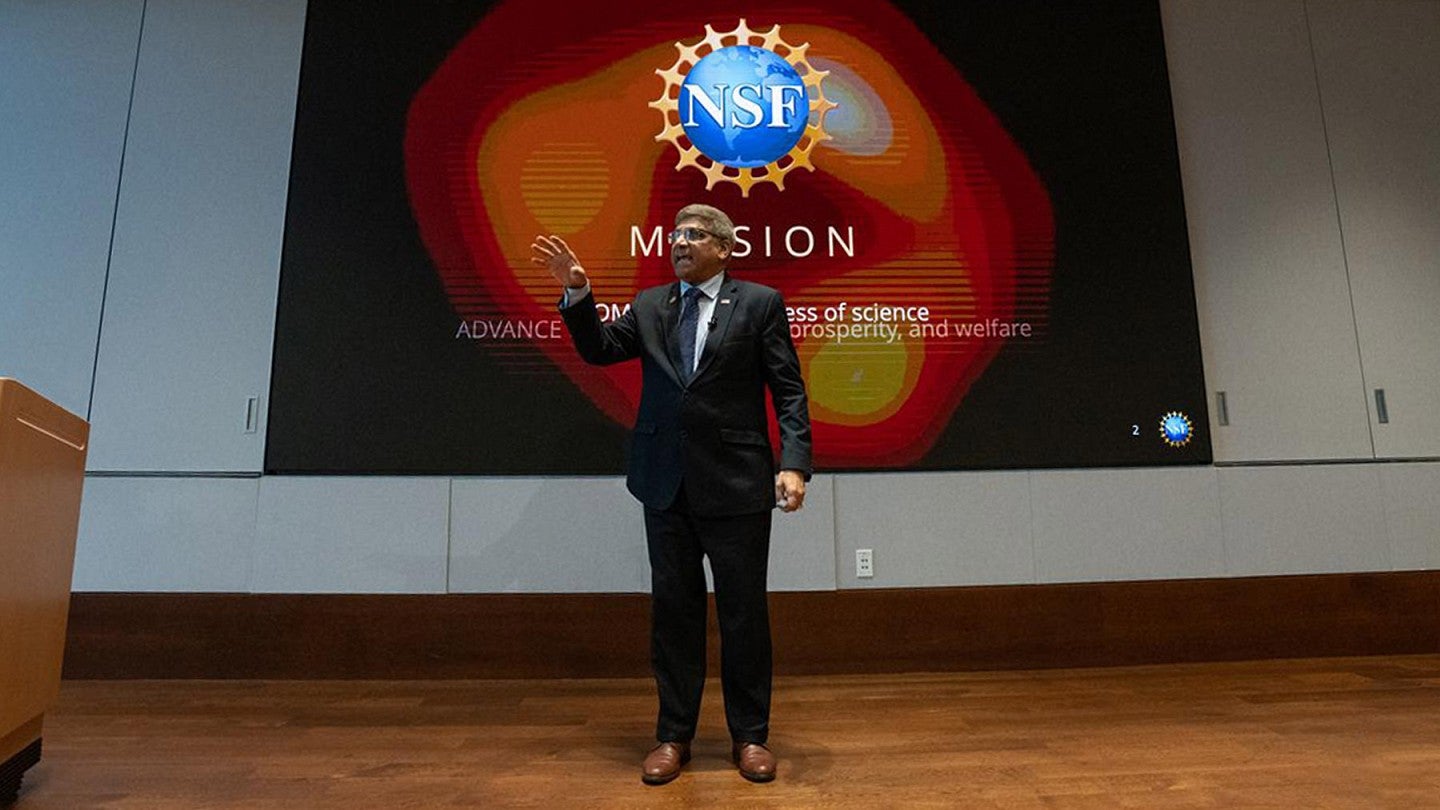
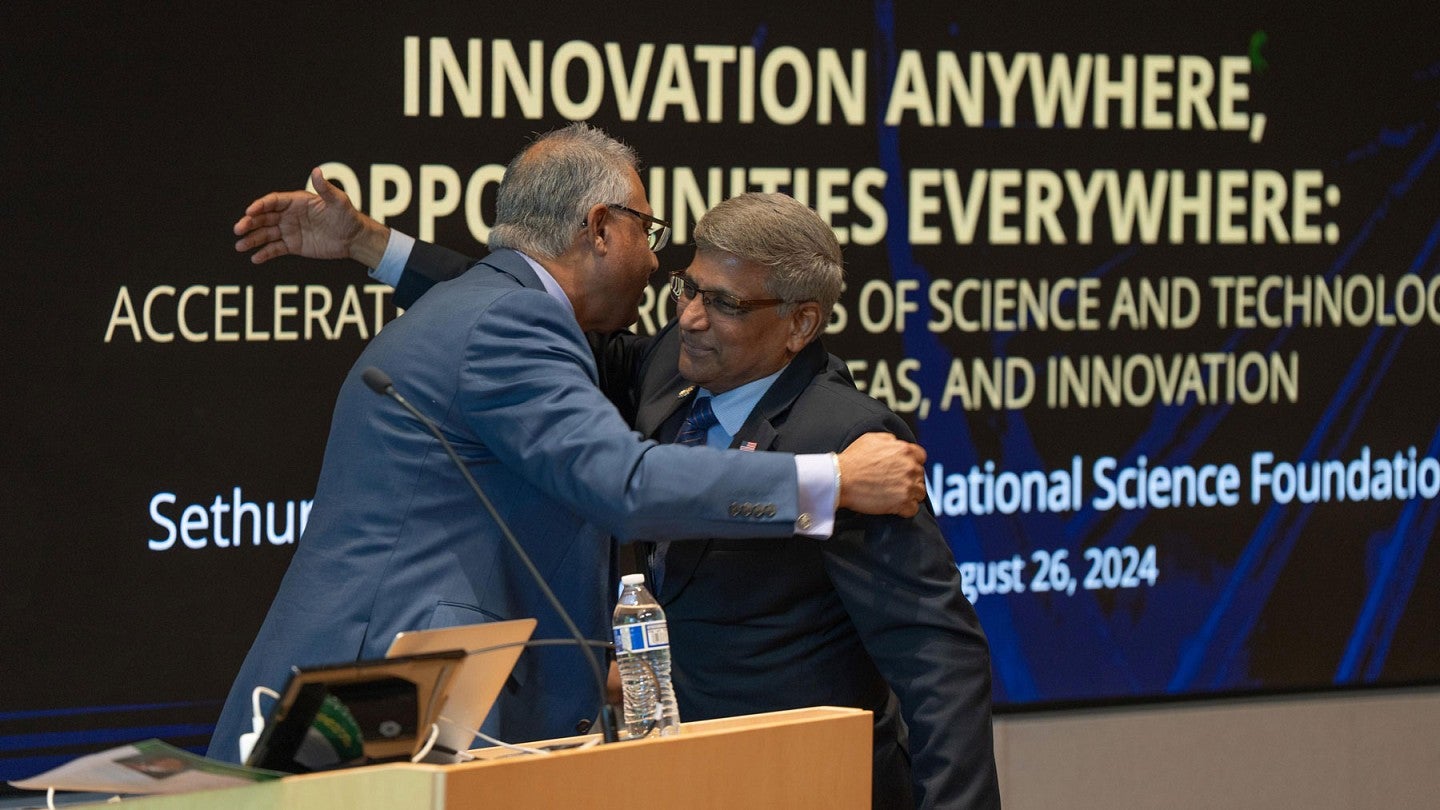
Panchanathan said the UO continues to benefit the state of Oregon and contributes mighty well to science. The NSF has invested $35.9 million in UO researchers in 2024 across many research disciplines.
He pointed to the UO’s research strengths in semiconductors, mass timber, seismic and hazard preparedness, as well as its national reputation for STEM education training and curriculum, as just a few of the many ways the UO contributes to both regional and national prosperity.
“UO can deliver for this region by leveraging the assets of this region: Ideas that are innovative and native to this locale, by building ecosystems of prosperity, so people both rural and urban, who want to stay here, have unbelievable opportunities.”
Panchanathan noted that scaling up innovation and opportunities happens through strategic partnerships with entities — NSF and other federal agencies, industry, philanthropic organizations, state economic development offices, community colleges and other universities, and venture capital — that have a shared vision and commitment.
“I think the regional innovation promise here is very significant,” he said. “I’m very impressed that the UO is looking at this as a holistic ecosystem across the state. That portends tremendous possibilities for the state and beyond. NSF is glad to be a partner in this as a catalyzing agent.”
NSF-Funded Research at the UO
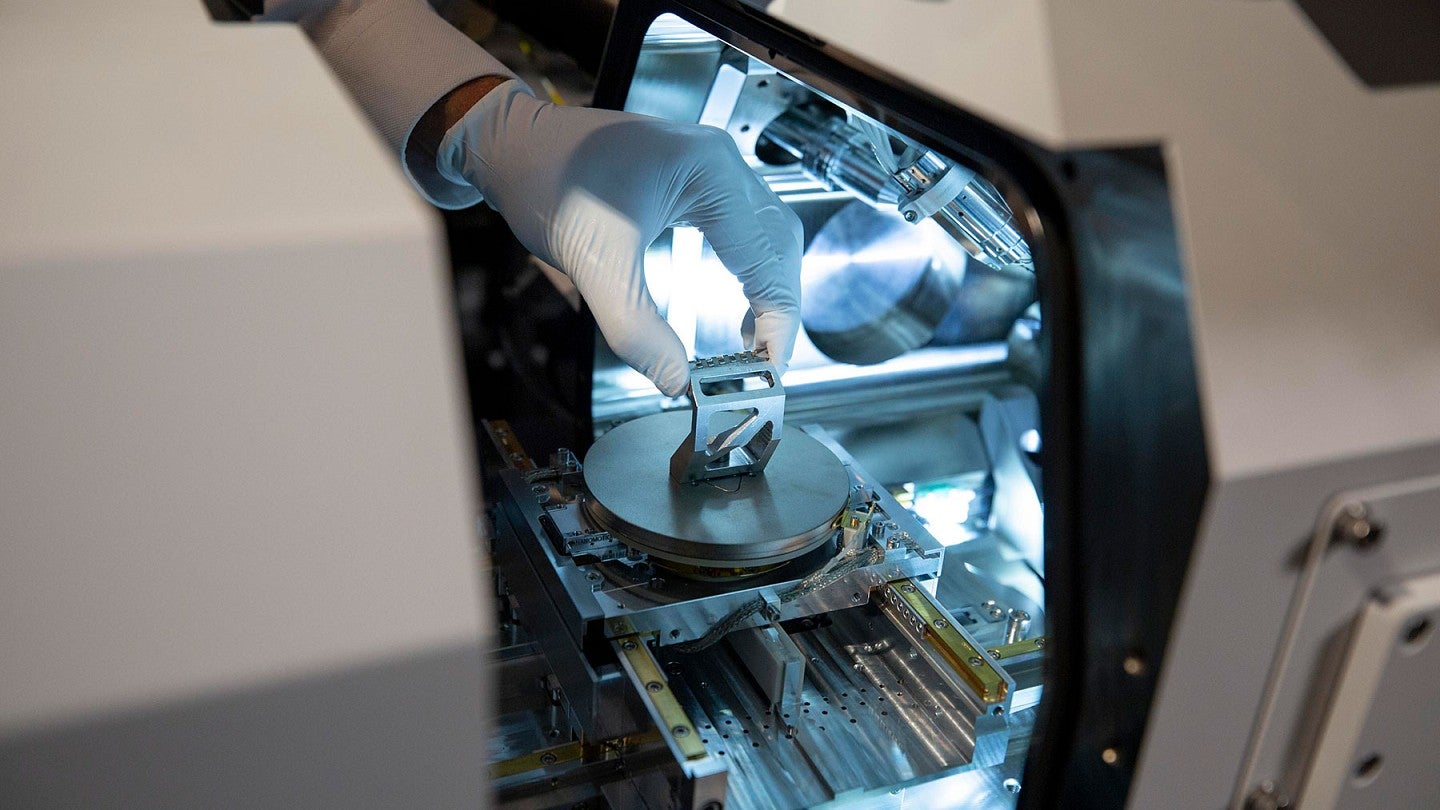
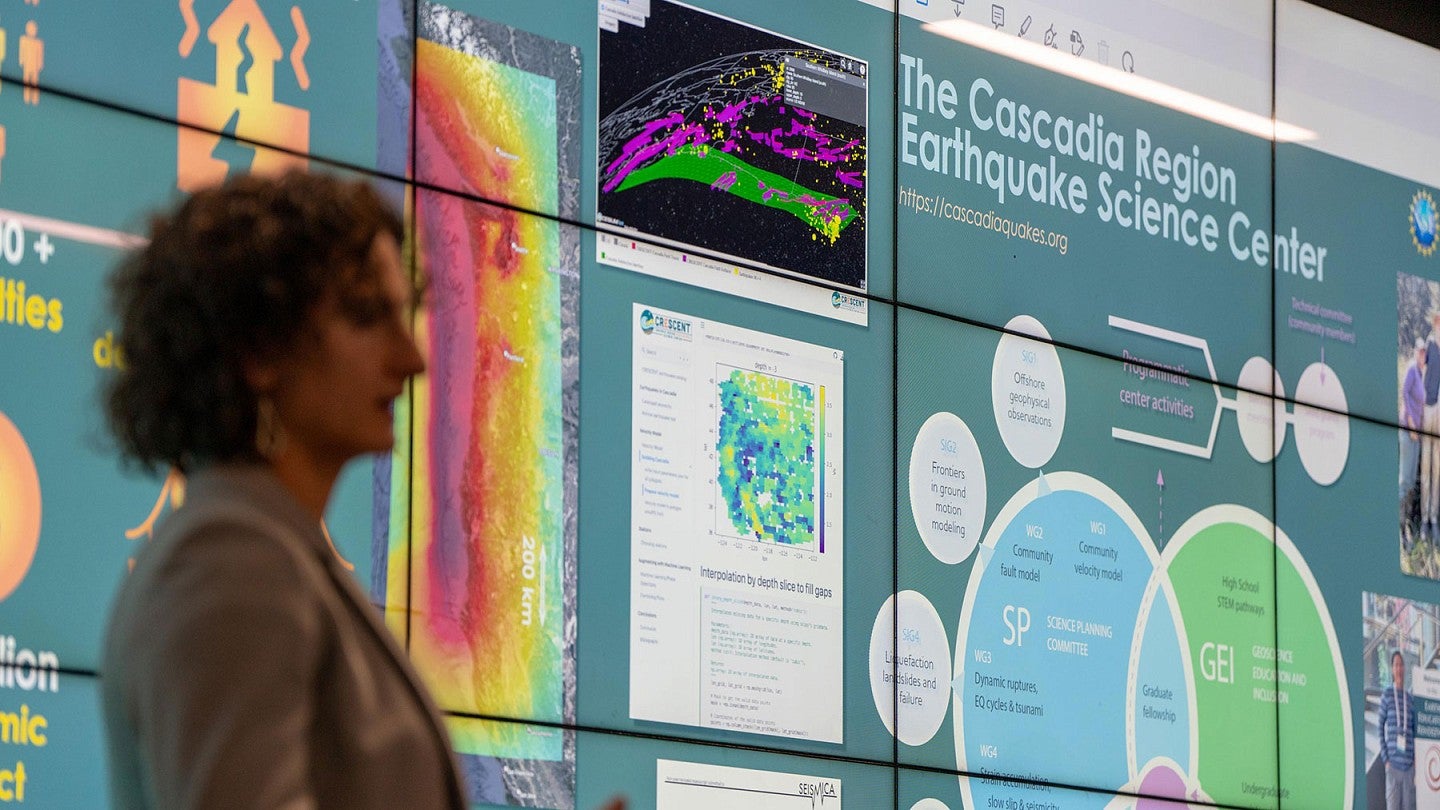
“If we want to be a more resilient society, we need to know the hazards," said Valerie Sahakian, co-lead investigator at the Cascadia Region Earthquake Science Center.
